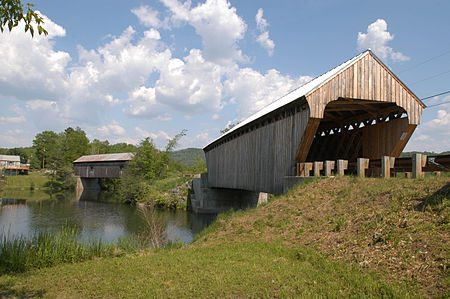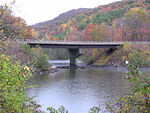Lebanon Municipal Airport (IATA: LEB, ICAO: KLEB, FAA LID: LEB) is a city-owned, public-use airport located three nautical miles (6 km) west of the central business district of Lebanon, a city in Grafton County, New Hampshire, United States. Also known as Lebanon Airport, it is the northernmost commercial airport in New Hampshire, near the Vermont border, off Interstate 89 just south of the junction with Interstate 91. Other nearby towns include Hanover, New Hampshire and White River Junction, Vermont. The area is also the home of Dartmouth College and the Dartmouth–Hitchcock Medical Center.
In recent years, the airport has struggled due to competition with the much larger Manchester–Boston Regional Airport, 65 miles (87 kilometers) away and accessible via the I-89 freeway. Colgan Air formerly offered nonstop flights from Lebanon to New York LaGuardia Airport operating as US Airways Express via a code sharing agreement with US Airways. The airline first operated the flights with the Beechcraft 1900 commuter propjet and later with the Saab 340 regional turboprop before service ended in November 2008.
On November 2, 2008, Cape Air began offering service to Boston. Airline service is subsidized by the Essential Air Service program utilizing the Tecnam P2012 Traveller aircraft. The terminal building has typical facilities such as baggage claim, a check-in desk, rental car services, and airport security.
As per Federal Aviation Administration records, the airport had 8,294 passenger boardings (enplanements) in calendar year 2008, 6,089 enplanements in 2009, and 7,832 in 2010. It is included in the Federal Aviation Administration (FAA) National Plan of Integrated Airport Systems for 2017–2021, in which it is categorized as a non-hub primary commercial service facility.









